
Renovating a Warehouse into a Chic Industrial Bar/Café
Renovating a Warehouse into a Chic Industrial Bar/Café: The Perfect Blend of Rugged and Refined
Converting a warehouse into an industrial-style bar or café is one of the most exciting transformations in interior design. These spaces inherently possess a charm rooted in their raw, utilitarian architecture, making them ideal for creating visually striking and functional venues. In this article, we delve into how to renovate a warehouse into a chic industrial-style bar or café, focusing on design principles, materials, and the contrasting elements that elevate the aesthetic. Whether you're a designer, developer, or enthusiast, this guide will inspire your next project.
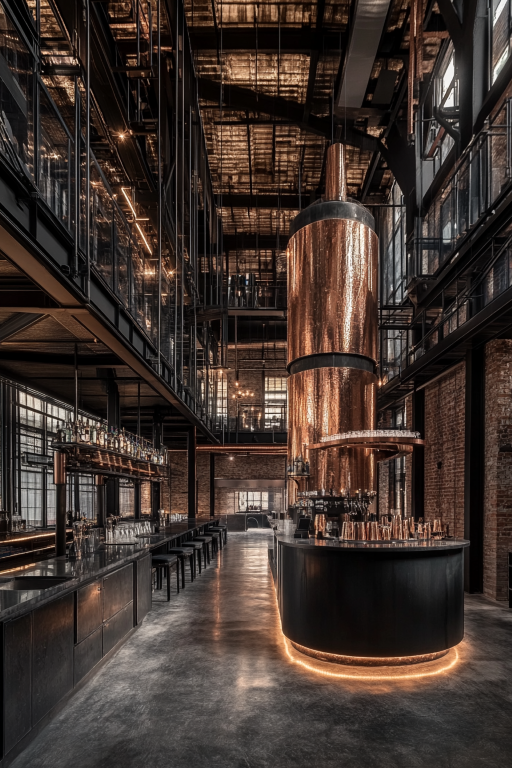
The Allure of Industrial Design
Industrial interior design is a timeless trend, particularly popular in commercial settings like bars and cafés. Originating from the need to repurpose old factories and warehouses, the style embraces raw materials, exposed structures, and utilitarian aesthetics. What makes industrial design so captivating is its ability to balance ruggedness with elegance, offering a space that feels both edgy and inviting.
Warehouses are the perfect canvas for this style. With their high ceilings, open layouts, and sturdy materials like brick and steel, these spaces provide a strong foundation to work with. Renovating such spaces not only preserves their historical charm but also breathes new life into them, creating unique destinations for customers.
Key Elements of Industrial Design for Bars and Cafés
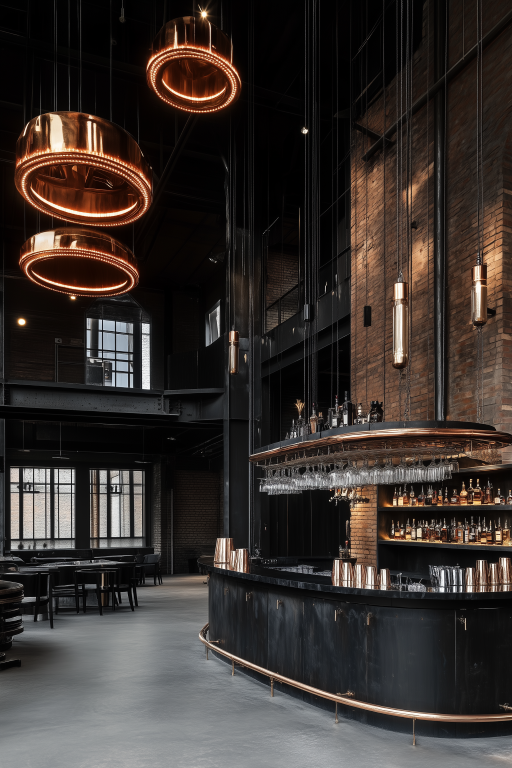
1. Exposed Architectural Features
One of the defining characteristics of industrial design is the celebration of the building’s structural elements. Instead of hiding beams, pipes, or ductwork, these features are intentionally left exposed to showcase the space's original purpose. For a warehouse conversion:
Brick Walls: Retain exposed brickwork to add texture and warmth. Sandblasting or sealing bricks can enhance their appearance while preserving their natural patina.
Steel Beams and Columns: Highlight structural steel elements by painting them in black or grey tones for a polished yet rugged look.
High Ceilings: Emphasize the verticality of the space by keeping the ceiling open and uncluttered. Use industrial-style pendant lights or chandeliers to draw the eye upward.
2. Material Palette
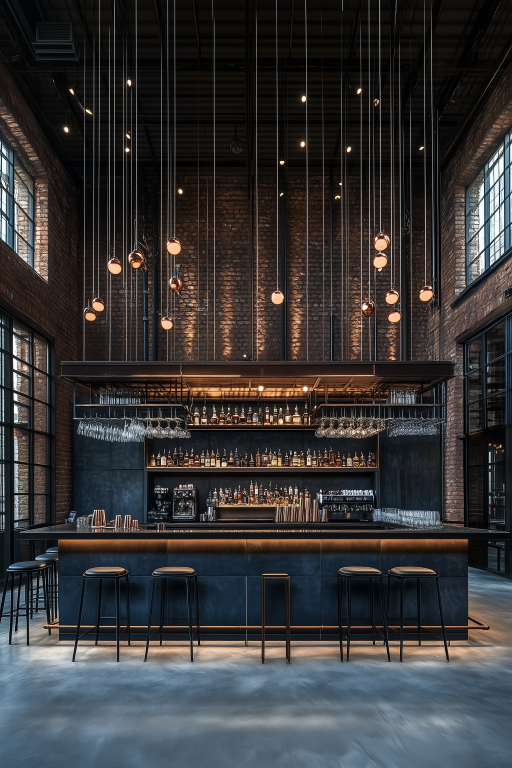
The materials used in industrial interiors are key to achieving an authentic look. Prioritise raw, sturdy, and utilitarian materials:
Concrete Floors: Polished concrete is durable, easy to maintain, and quintessentially industrial. Adding a matte sealant can enhance its appearance and protect it from wear.
Metal Finishes: Incorporate blackened steel or brushed aluminium in furniture, railings, and fixtures. Copper or brass accents, like the stunning central copper column in the featured design, add warmth and sophistication.
Wood Elements: Balance the hard surfaces with reclaimed wood for tables, shelving, or panelling. The natural grain of the wood softens the space while maintaining its industrial authenticity.
3. Open Layouts
Warehouses are known for their expansive, uninterrupted spaces. An open-plan design not only honours this legacy but also creates a versatile and dynamic environment:
Zoning: Use furniture or subtle changes in flooring materials to define areas like the bar, seating zones, and walkways without disrupting the open flow.
Central Features: A standout feature, such as a curved bar or a statement staircase, can serve as the focal point of the space while preserving its openness.
Adding Elegance to Industrial Spaces
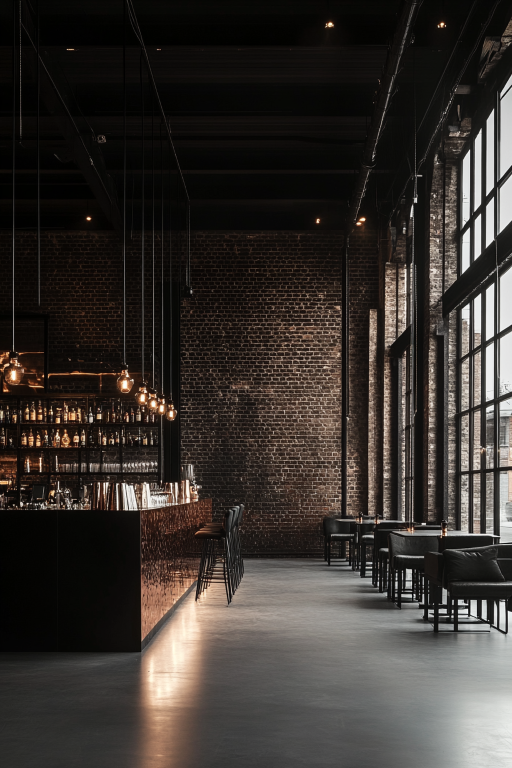
While industrial design celebrates rawness, adding refined elements creates a sense of balance and sophistication. The interplay between rugged and polished is what elevates a design from ordinary to extraordinary.
1. Soft Lighting
Industrial spaces can feel cold or stark without the right lighting. Incorporate warm, layered lighting to create a welcoming atmosphere:
Pendant Lights: Opt for industrial-style fixtures with warm-toned bulbs. Glass or metal shades in black, copper, or brass add a refined touch.
LED Strips: Use LED lighting under counters or along architectural features to highlight textures and provide subtle illumination.
Statement Lighting: A dramatic chandelier or oversized pendant can act as a conversation piece and elevate the overall aesthetic.
2. Furniture with Character
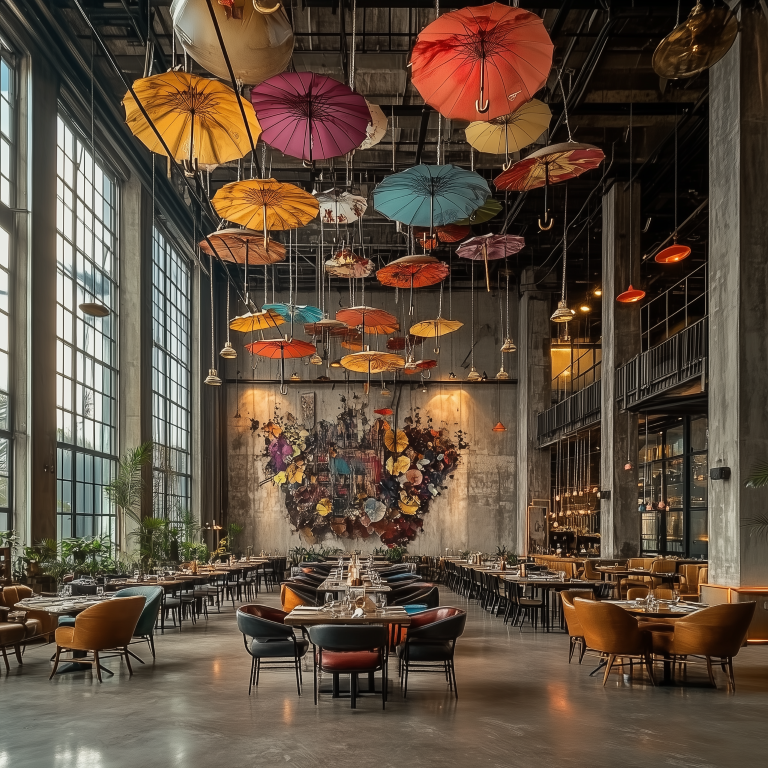
Furniture plays a crucial role in softening the industrial aesthetic and making the space comfortable:
Bar Stools and Chairs: Choose sleek designs in materials like metal, leather, or wood. For a more luxurious touch, opt for upholstered seating in earthy tones or rich textures.
Tables: Use reclaimed wood or polished concrete tabletops with steel bases for a cohesive look.
Custom Pieces: Consider commissioning bespoke furniture that incorporates industrial materials with elegant detailing, such as curved edges or mixed textures.
3. Contrasting Details
Contrasts create visual interest and depth. In an industrial space, the juxtaposition of raw and refined elements can be particularly striking:
Brick and Glass: Pair exposed brick walls with sleek glass partitions or windows to add transparency and lightness.
Metal and Greenery: Balance hard metal elements with lush plants to introduce softness and vibrancy.
Matte and Glossy Finishes: Mix matte surfaces, like concrete or steel, with glossy accents, such as polished copper or lacquered wood.
Designing for Functionality and Experience

Creating a successful bar or café is about more than aesthetics; functionality and guest experience are equally important. Here are some practical considerations:
1. Acoustic Solutions
Industrial spaces with hard surfaces can amplify noise, making it challenging for patrons to enjoy their time. Incorporate acoustic solutions to manage sound levels:
Use fabric elements like upholstered seating, curtains, or acoustic panels.
Add rugs or carpeting in specific zones to absorb sound.
Consider hanging acoustic baffles or panels from the ceiling, designed to blend seamlessly with the industrial aesthetic.
2. Efficient Layout
The layout should facilitate smooth operations and a pleasant customer journey:
Ensure there is ample space around the bar for customers and staff.
Position seating to maximize comfort and sightlines while maintaining an open feel.
Create clear pathways to key areas like the bar, restrooms, and exits.
3. Branding and Identity
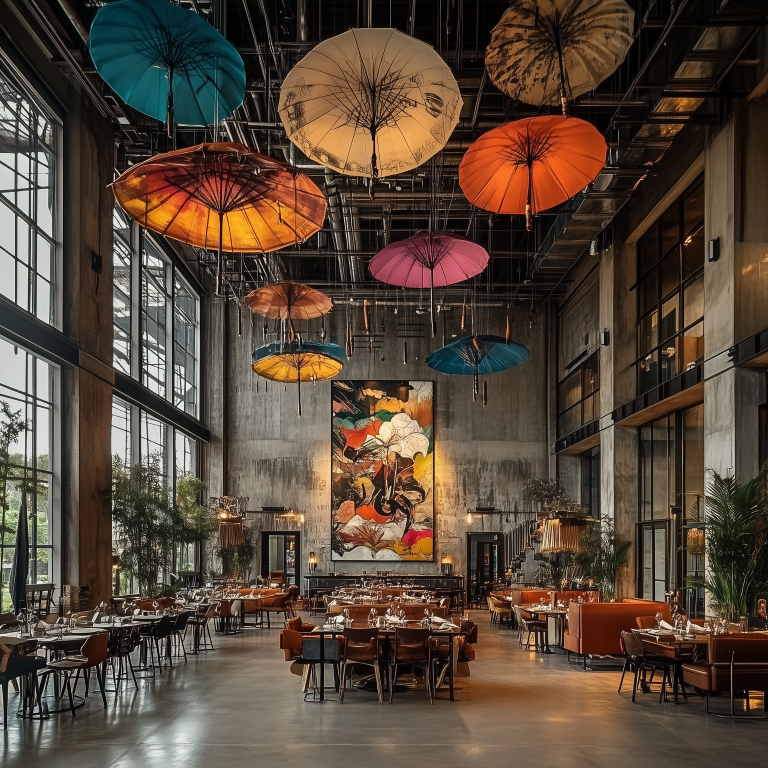
Your bar or café should have a unique identity that resonates with your target audience. Use the design to tell a story:
Highlight the warehouse's history through signage, decor, or art.
Incorporate brand colours subtly into the design through upholstery, lighting, or accessories.
Display curated items, like vintage industrial tools or machinery, as decor to reinforce the theme.
Case Study: Chic Industrial Bar Design
The featured bar exemplifies how to achieve a chic industrial look with elegance. Key highlights include:
Statement Copper Feature: A central copper column acts as both a functional element and a visual focal point, drawing attention and adding warmth.
Polished Concrete Floors: The smooth, reflective surface contrasts beautifully with the rough textures of brick and steel.
Sleek Furniture: Minimalist black bar stools and tables blend seamlessly with the industrial theme, while their refined design ensures comfort and style.
Warm Lighting: LED strips under the bar and pendant lights above create a cozy ambiance, highlighting the architectural details.
Sustainability in Industrial Renovations
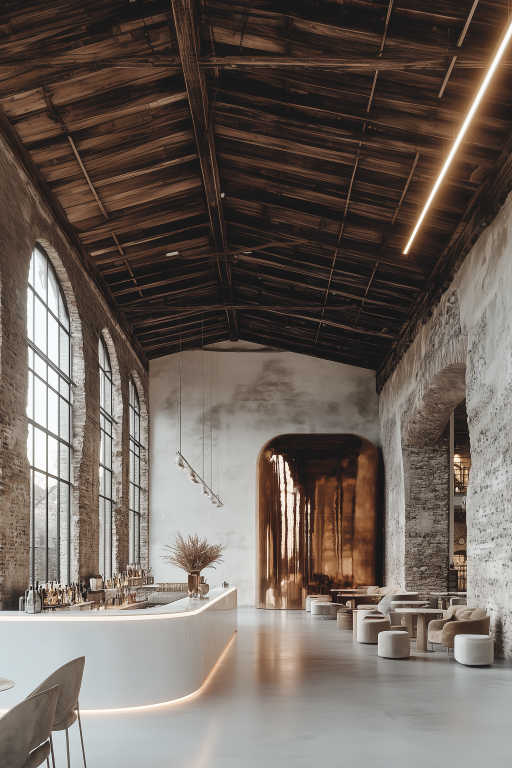
Sustainability is an increasingly important consideration in modern design. Renovating a warehouse into a bar or café offers several opportunities to incorporate eco-friendly practices:
Reclaimed Materials: Use salvaged wood, metal, or brick to reduce waste and add character.
Energy Efficiency: Install energy-efficient lighting, HVAC systems, and appliances.
Greenery: Incorporate plants not only for aesthetics but also to improve air quality.
Local Sourcing: Work with local artisans and suppliers to minimize your carbon footprint and support the community.